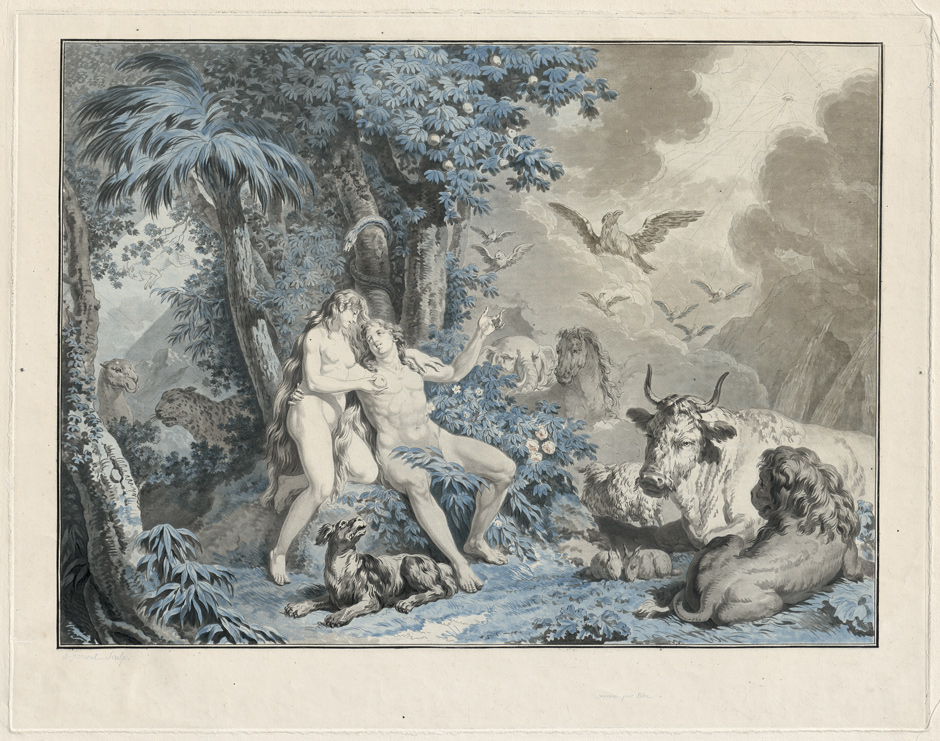Loading the page ...
Jean-François Janinet
(1752–1814, Paris)
Adam and Eve. Colour etching and aquatint from several plates, after Jean-Baptiste Le Barbier. 38.9 x 49.5 cm. 1783. Portalis-Beraldi 65; Inventaire du Fonds Français, vol. 12, p. 48, no. 83 I (of II).
The son of a lapidary, Janinet probably took his first art lessons from his father before entering the studio of the print-maker, Louis-Marin Bonnet, through whom he became acquainted with the techniques of multi-plate colour printing. Although he entered the Académie royale as a student of painting in 1772, Janinet owes his fame largely to his printed oeuvre. The second half of the eighteenth century witnessed the development of various new printing techniques, the aim of which was to imitate drawing techniques like chalk drawing, watercolour, gouache and pastel. The manière de lavis technique, which Janinet brought to perfection, is not, as most of the older literature suggests, a form of aquatint printing. It is in fact a highly sophisticated and complicated procedure, which involves several printing plates in different colours and makes use of mattoirs to delicately roughen the copperplates (“The Triumph of Color: Technical Innovations in Printmaking” in exhib. cat. Regency to Empire. French Printmaking 1715–1814, ed. by V. I. Carlson and J. W. Ittmann , Baltimore-Boston-Minneapolis 1985, pp. 23, 258).
It proved to be a technique particularly suitable to imitating the popular watercolours and gouaches in the spirit of Nicolas Lavreince, Pierre Antoine Baudouin and Jacques Charlier. Following many technical experiments Janinet attained a considerable degree of perfection in the art of colour printing. However, his reputation as a man of technical skill suffered a severe setback when, on 11 July 1784, Janinet and his friend, Abbé Miollan, organized a public event around the ascension of their self-made hot-air balloon. Instead of taking off, the balloon caught fire, making its constructors the subject of numerous popular print caricatures, satirical songs and anecdotes (see: Portalis/Beraldi 1881, pp. 465–470). Portalis and Beraldi nevertheless state that Janinet produced his best prints in the years following this unfortunate event.
The present biblical subject is based on a design by Jean-Baptiste Le Barbier. Our print is available here in a rare proof impression before letters and before the subsequent rework in aquatint.
It probably is a unique impression of an intermediary state. A subsequent state with a considerably richer range of colours is kept in the Museum of Fine Arts in Boston. This version was unknown to the authors of the Inventaire du Fonds Français. A very fine, nuanced impression with wide margins. Minor handling marks, otherwise very well preserved.
